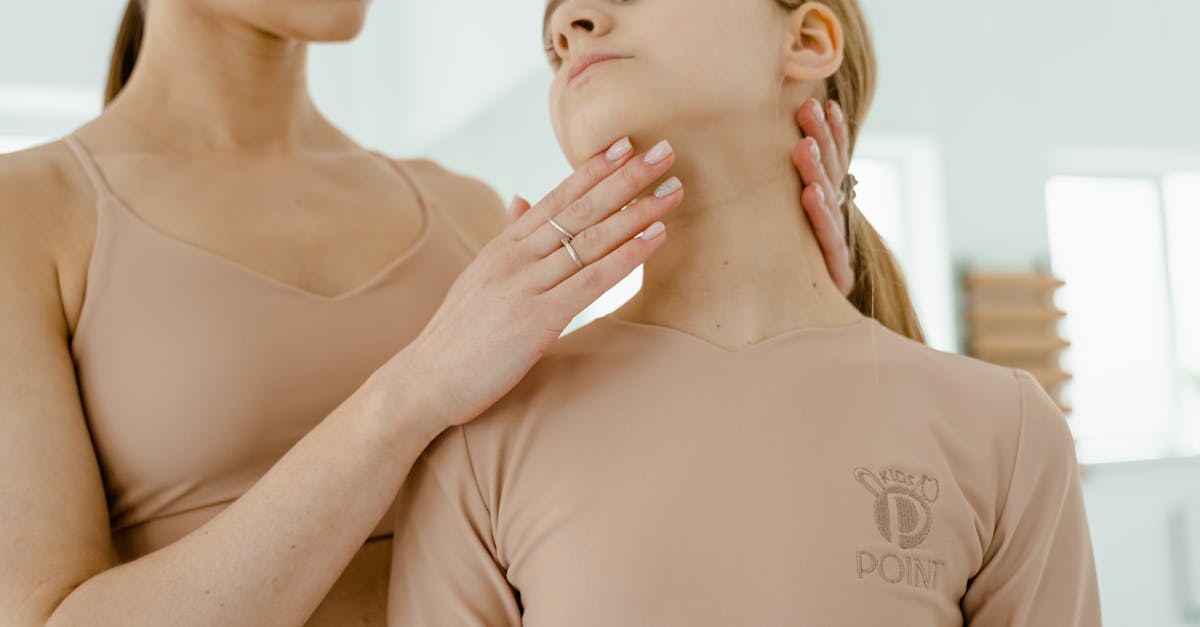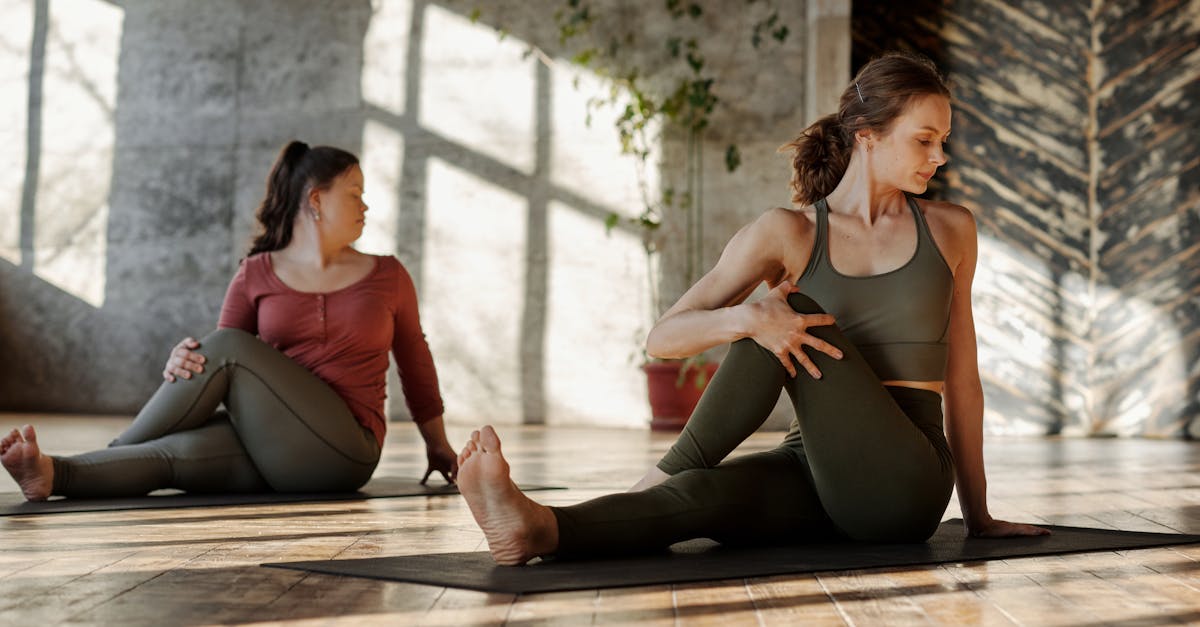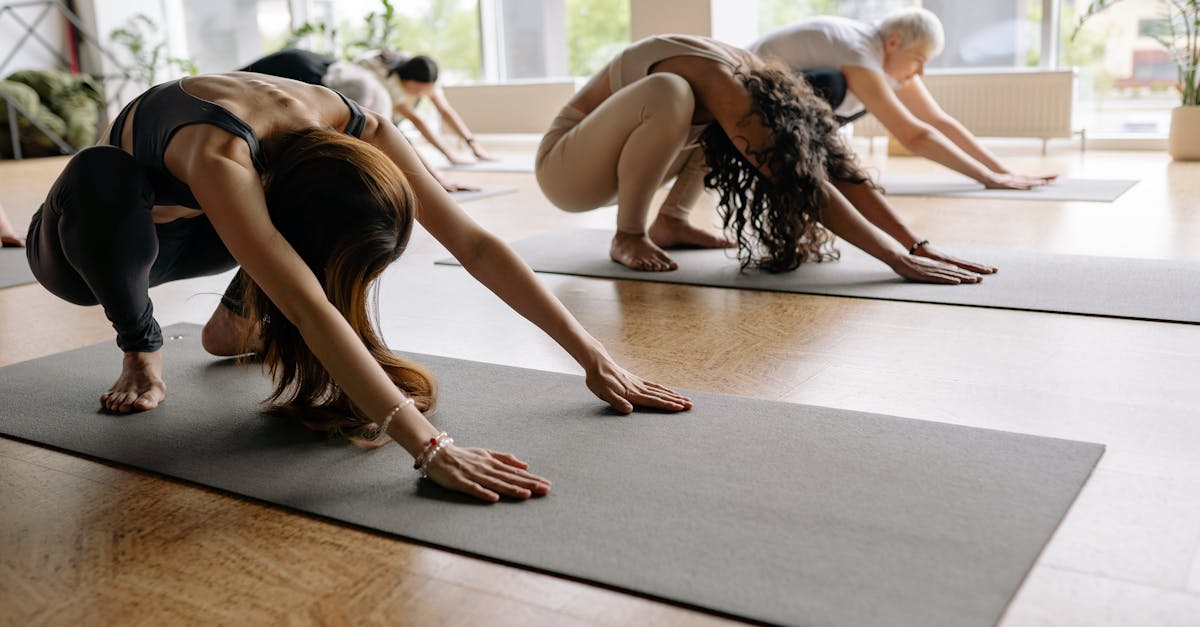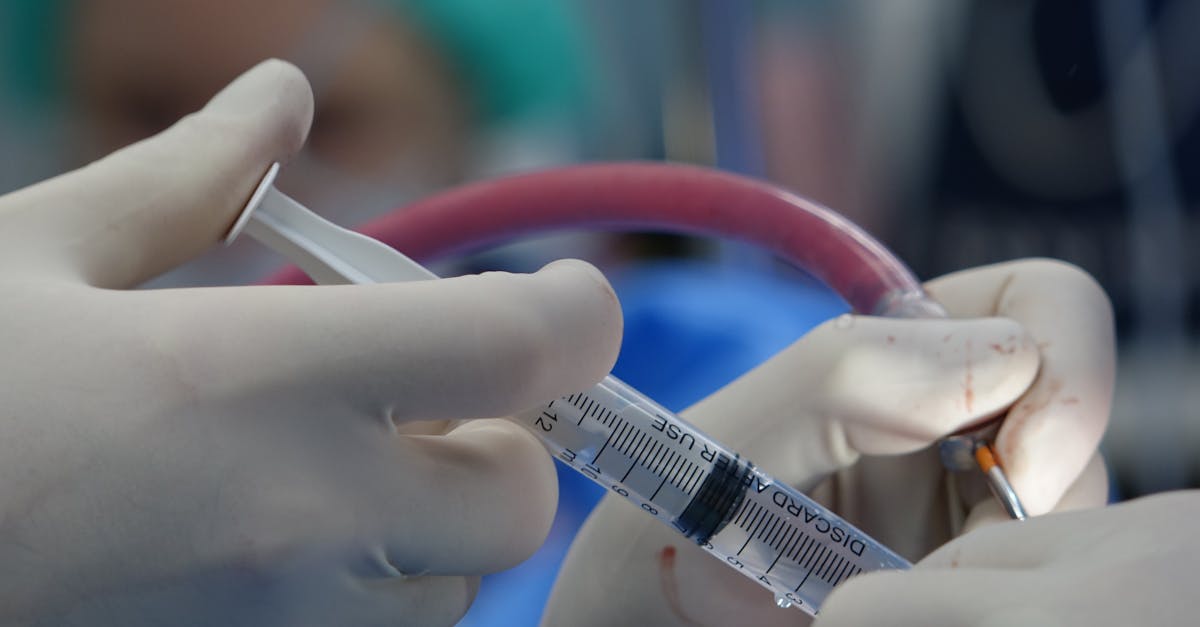Suffering from tension headaches? Poor posture could be the culprit.
In Short: Could poor posture be triggering your tension headaches? Strengthening your core and improving your posture can lead to significant headache relief. By addressing neck misalignment and reducing muscle tension, you can create a more balanced and comfortable body. Pulse Align Clinics offer a holistic approach to postural recalibration, empowering you to reclaim your wellness. Ready to experience the benefits? Contact Pulse Align to learn more.
Are you struggling with lower back pain and poor posture?
Could poor posture be triggering tension headaches? Over 80% of adults experience tension headaches at some point in their lives, often linked to poor alignment and underlying neck pain. Misalignments can lead to increased pressure, contributing to common headache causes such as muscle tension and stress, while also amplifying symptoms like nausea with headache and migraine pain. Pulse Align offers innovative solutions for headache relief through targeted posture correction techniques. Experience the benefits of improved alignment and core strengthening to alleviate migraine triggers and enhance overall wellness.

Are you feeling a constant sense of tension that just won’t go away? You might be surprised to learn that poor posture could be playing a significant role in your discomfort. Beyond affecting your spine and neck, your posture can impact your overall well-being. At Pulse Align, we focus on posture improvement and neuromuscular recalibration to help restore balance in your body, which may naturally alleviate tension over time.
Unraveling the Connection Between Posture and Tension
Many individuals underestimate the influence of posture on their daily lives. Poor alignment, whether from long hours at a desk or incorrect sleeping positions, can lead to muscle imbalances and tension throughout the body. As your head tilts forward, it adds strain on your neck and shoulders, increasing your chances of feeling tension in your head and neck area. This is where Pulse Align’s unique approach comes in. Through methods like gentle stimulation, we help enhance muscle tone and encourage your body’s natural ability to find its balance.
Embracing Holistic Wellness
At Pulse Align, we embrace a holistic perspective towards well-being. Our services promote a supportive environment for clients of all ages, including children and pregnant women. Many have reported improvements in their posture and a subsequent reduction in tension. Your journey to feeling better can start with understanding how gentle, non-invasive techniques can nurture your body’s inherent healing potentials. Through our training and strategies, you may experience visible changes, positively impacting your posture without focusing directly on specific symptoms.
What Clients Are Saying About Their Experience
Clients who have embarked on this wellness journey with Pulse Align often express satisfaction with their improvements. One client remarked, “I wasn’t aware of how much my posture could affect my daily life until I tried Pulse Align. I’ve noticed my neck discomfort has decreased significantly as I become more aware of my body!” With a commitment to addressing the root causes of discomfort, we encourage you to discover for yourself just how transformative focusing on posture improvement can be.
Your Path to Balance Starts Here
Are you ready to explore how the services at Pulse Align can assist you? We invite you to visit our website for more information and to book your consultation at a location near you in cities like Montreal, La Prairie, Terrebonne, Chicoutimi, Charlesbourg, Saint-Jérôme, Châteauguay, Sainte-Marie, Les Escoumins, Granby, or Panama City. Remember, Pulse Align enhances your path to well-being alongside your healthcare journey. Feel free to learn more about how we can support you.
- Stress Relief: Improve your posture to alleviate tension in the neck and shoulders.
- Muscle Balance: Address muscular imbalances with targeted exercises.
- Neck Alignment: Adjustments can help reduce headache triggers.
- Posture Correction: Simple changes in your daily routine can make a significant difference.
- Ergonomics: Optimize your work environment for better posture.
- Awareness: Becoming mindful of your posture can lead to proactive adjustments.
- Strengthening: Enhance your core and back strength to support better posture.
- Therapeutic Techniques: Explore methods offered by Pulse Align for effective relief.

Many individuals suffer from the discomfort of tension headaches, often without understanding the underlying causes. Among these, poor posture may play a significant role in triggering these painful episodes. In this article, we explore the crucial link between posture and headaches, focusing on how Pulse Align’s innovative, holistic approach can pave the way toward relief.
The Connection Between Poor Posture and Headaches
Often, people perceive posture as merely the arrangement of the spine, neck, and shoulders. However, maintaining good posture is pivotal for achieving neuromuscular health. Poor posture leads to misalignment in the neck, which can tighten the muscles, resulting in discomfort that manifests as migraine pain or stress-related tension headaches. Cumulatively, this stress increases the likelihood of chronic conditions such as vestibular migraines and hormonal headaches.
Understanding Tension Headaches
Tension headaches are among the most prevalent headache types, marked by consistent discomfort often likened to a tightening band around the head. Factors such as muscle tension in the neck and shoulders, combined with poor posture, act as common migraine triggers. By acknowledging and addressing posture, you can significantly reduce the frequency and severity of these headaches, laying down a pathway towards natural headache remedies.
Effective Posture Correction Techniques
Correcting your posture involves a multi-faceted approach to enhance core strengthening and promote spinal alignment. Here are some practical techniques you can begin implementing today:
- Sitting Correctly: Always sit with your back straight, shoulders relaxed, and feet flat on the floor. This will not only alleviate strain but also reduce the likelihood of cluster headaches.
- Trunk Exercises: Engaging in trunk exercises can help build core strength. Activities like planks or bridges are highly beneficial for stabilizing your body and improving posture.
- Stretching for Relief: Stretching exercises, particularly focusing on the neck and shoulders, can alleviate the tightness often associated with poor alignment. Consider using techniques such as yoga to enhance flexibility.
Using Pulse Align’s Holistic Method
Pulse Align’s unique approach to posture correction intertwines gentle recalibration with essential movement practices. Our personalized plans target muscle imbalances, allowing you to regain natural balance throughout your body. By incorporating shockwave therapy along with specialized exercises, we can help deter the onset of nausea with headaches and other associated symptoms.
Call to Action
If you are struggling with the discomfort of tension headaches, it’s time to take action! Book a consultation with Pulse Align today. Together, we can create a customized exercise plan for you, integrating core strengthening and effective posture correction techniques tailored to your needs. Experience the transformative benefits of recalibrating your posture and discovering a new level of well-being.
Understanding the Impact of Posture on Tension Headaches
| Posture Issues | Effects on Tension Headaches |
| Poor sitting posture | Increases pressure on neck and shoulders, causing tension headaches. |
| Forward head posture | Stresses suboccipital muscles, leading to headache triggers. |
| Slouched back position | Contributes to muscular imbalances, exacerbating headache pain. |
| Inadequate lumbar support | Creates discomfort, increasing tension and headache frequency. |
| Prolonged screen time | Encourages poor posture, leading to heightened headache occurrences. |
| Lack of movement breaks | Causes muscle tightness, which can trigger tension headaches. |
| Unsupportive ergonomic setup | Impedes proper alignment, increasing the chance of headaches. |
| Low physical activity | Weakens core muscles, contributing to poor posture and headaches. |

Transforming Lives: Clients Share Their Wellness Journey with Pulse Align
“I’ve struggled with tension headaches for years and never thought of how posture could play a role. After starting my journey with Pulse Align in Châteauguay, I began to understand the connection. Their unique approach to recalibrating my body has not only improved my posture but also diminished my headaches significantly. I felt the improvements naturally, and I couldn’t be more grateful!”
“In Deux-Montagnes, I found that poor posture was affecting my daily life and triggering painful tension headaches. The team at Pulse Align helped me realize that there was a holistic solution to my struggles. Their methods truly support the body’s natural ability to restore balance. I now experience fewer headaches and enjoy enhanced well-being.”
“As a resident of Sainte-Marie, I was intrigued by Pulse Align’s focus on wellness and their holistic view of health. After integrating their gentle recalibration techniques into my routine, I was amazed at how my tension headaches diminished over time. It’s incredible how simple adjustments can lead to such profound changes in overall health!”
“Pulse Align’s commitment to working alongside healthcare teams in Mont-Royal has made all the difference in my life. With their emphasis on postural awareness and gradual adjustments, I’ve witnessed a real transformation. I’ve reclaimed my vitality and reduced my headaches, all through a natural approach that respects my body’s rhythm.”
“Living in Chicoutimi, I’ve always sought ways to enhance my wellness. Finding Pulse Align was a turning point. Their strategies for improving posture not only alleviated my tension headaches but also equipped me with tools to maintain my well-being in a holistic way. It’s empowering to navigate my health with such support!”
For those in neighboring regions such as La Prairie or Charlesbourg, discovering how Pulse Align can assist you in restoring balance and improving your body function is easy. Check out Our Clinics to find out more about how we work collaboratively with healthcare teams to support clients and their families on their wellness journey.”
Many individuals experience chronic headaches, often without understanding the underlying factors contributing to their pain. One significant yet often overlooked factor is posture. The way we hold our bodies affects not only our spinal alignment but also the overall tension throughout our body, including the head. Poor posture commonly leads to tension headaches and even migraines, creating a cycle of discomfort that can be hard to break.
When our neck is misaligned due to slouched shoulders or forward head posture, it can place undue stress on the surrounding muscles and tissues. This misalignment can lead to increased tension in the neck, shoulders, and scalp, making headaches more frequent and intense. As muscle strain builds over time, it has the potential to trigger these frustrating pain types. Thus, it is crucial to assess and improve posture as a key strategy in managing headache symptoms.
Everyone can take steps to improve their posture and, in turn, lessen the frequency and severity of their headaches. It begins with increasing postural awareness. Simple adjustments in how we sit, stand, and move can make a significant difference. Engaging in exercises that strengthen the core and back muscles can lead to enhanced stability and alignment, helping to reduce the tension that leads to headaches.
Our Mission
At Pulse Align, our mission is to deliver evidence-based, client-centered treatments that address the underlying causes of pain and dysfunction. By integrating advanced techniques and technologies, we strive to empower each person to take control of their health, ensuring a high standard of care, lasting relief, and an improved quality of life.
Incorporating elements such as ergonomic furniture, proper sitting posture, and regular stretches into your daily routine can also contribute to reducing neck strain and tension. Whether at work or home, creating an environment conducive to good posture matters. This holistic approach not only alleviates discomfort but also promotes overall well-being.
As you embark on your journey towards better health, consider exploring the resources available at Pulse Align. Here, we focus on personalized adjustments and therapies that seek to realign the body silently yet profoundly. Engage with our community to better understand how to navigate your wellness path and prioritize your health.
Learn more about his approach and available services at www.pulsealign.com and find a location near you here: https://pulsealign.com/our-locations/
Transform Your Life with TAGMED’s Spinal Decompression Technology
TAGMED offers an advanced Spinal Decompression Therapy that is tailored specifically for patients suffering from chronic pain linked to conditions such as a herniated disc, bulging disc, or spinal stenosis. This innovative, non-surgical solution is designed to alleviate discomfort by gently reducing pressure on the affected nerves and discs, enhancing mobility, and supporting the body’s natural healing processes. If you’ve experienced a plateau with other treatments, exploring TAGMED’s evidence-based approach can be the key to resuming an active and comfortable life.
Have you tried conventional treatments and still struggle with persistent back pain due to a severe disc condition?
Mechanism of Action
TAGMED’s neurovertebral decompression applies a controlled, progressive traction force to the spine. This technique effectively increases the space between vertebrae, thereby reducing pressure on intervertebral discs and nerve roots. By promoting better fluid circulation in the targeted area, this method reduces inflammation and alleviates pain, providing a reliable, non-invasive solution for those facing chronic back issues. This comprehensive approach allows patients to experience significant relief without invasive procedures.
Specific Benefits
One of the most compelling advantages of TAGMED’s non-invasive approach is its ability to effectively alleviate chronic pain related to conditions such as degenerative disc disease or foraminal stenosis. By reducing pressure on nerve structures and optimizing fluid circulation around the discs, neurovertebral decompression can speed up recovery times and enhance the overall quality of life. This makes it an attractive option for various patients seeking relief from persistent symptoms like sciatica or facet syndrome.
Comparison with Other Treatments
When compared to traditional treatments such as pain medications, corticosteroid injections, or even surgical interventions, TAGMED’s neurovertebral decompression stands out. It eliminates the need for invasive procedures, minimizes risks associated with long-term medication use, and offers patients a potentially faster recovery path. This approach is particularly beneficial for those who wish to explore safer, evidence-based alternatives for pain management.
Case Studies or Testimonials
Numerous patients have reported positive outcomes following their experiences with TAGMED’s neurovertebral decompression therapy. Testimonials highlight substantial improvements in pain relief, a quicker return to daily activities, and a diminished reliance on pharmaceuticals. These real-world examples showcase the practical advantages of this therapy and reinforce its effectiveness in treating chronic pain and enhancing patients’ quality of life.
Enhance Your Well-Being with Balanced Posture
Could poor posture be triggering your tension headaches? If you’ve experienced this discomfort, you’re not alone. Many individuals find that addressing their posture leads to remarkable improvements in their overall health. By focusing on posture correction, you can unlock a multitude of benefits including reduced discomfort, increased mobility, and enhanced well-being.
At Pulse Align, our clients frequently share their positive experiences regarding our holistic approach to health. They appreciate how our gentle, non-invasive support aligns with their body’s natural healing abilities. This compassionate approach not only fosters improved posture but also promotes a sense of balance and well-being that resonates throughout their lives.
If you’re ready to explore how mastering your posture can lead to a more vibrant you, we encourage you to discover the Pulse Align difference today. Schedule your consultation now and take that empowering step towards improved wellness. Remember, by embracing holistically centered practices, you are investing in a more comfortable and fulfilling future.

Do you suffer from a chronic condition that responds little or not at all to conservative treatments?
Poor posture can significantly impact overall well-being, potentially leading to feelings of discomfort and tension. At Pulse Align, we offer a non-invasive, innovative method designed to help restore the body’s natural balance and posture through gentle, imperceptible pulses. Our approach encourages the body to realign itself naturally, which can lead to reduced muscle and joint tension, providing a holistic solution to improve functional wellness.
Rather than directly addressing discomforts, Pulse Align focuses on the body’s innate ability to recalibrate itself. This often results in remarkable improvements in comfort and posture, allowing our clients to feel more at ease and centered throughout their daily activities. The aim is to nurture an overall sense of well-being, promoting a more harmonious state in both body and mind.
At Pulse Align, we pride ourselves on our personalized approach. Each client’s journey is unique, and we tailor our services to support individual needs. Many of our clients have shared testimonials highlighting their experiences of notable improvements in neck and back tension, enhanced well-being, and a greater sense of balance. These stories reflect the positive transformations that occur when one embarks on a path toward improved posture and muscle tone symmetry.
We invite you to explore the possibilities with us. Visit the Pulse Align website to learn more about our services. Whether you are located in La Prairie, Mont-Royal, Terrebonne, or other surrounding areas, you can find nearby locations and schedule a consultation for yourself or your family. Remember, Pulse Align works alongside your existing healthcare services to complement your wellness journey, promoting a healthier lifestyle for everyone.
With our advanced technology, we help regain the symmetry of normal muscle tone, thus reducing tension across various joints and enhancing overall wellness gently and comfortably. Our services are designed to be safe for families, including pregnant women and young children, ensuring everyone can benefit from our holistic approach. Discover how we can assist you in achieving your wellness goals by booking an appointment online today.
To learn more about our services and book an appointment, visit our website: Pulse Align
Frequently Asked Questions
Headache and Migraine
- What about ocular migraines?Migraines with aura can cause visual disturbances (flashing lights) before pain onset.
- Does dehydration cause headaches?Yes, inadequate hydration can trigger headaches and worsen migraines.
- Does cognitive-behavioral therapy help?Yes, it teaches stress and pain management techniques, reducing migraine frequency and intensity.
- Do sunglasses help during a migraine?Yes, they reduce light sensitivity and partially alleviate symptoms.
- Are alternative therapies (acupuncture) useful?Some find relief with acupuncture, though effectiveness varies among individuals.
- Is stress a trigger?Yes, physical or emotional stress is among the most common headache and migraine triggers.
- Are blue-light filtering screens useful?They reduce eye strain, potentially lowering headache risk.
- Do migraines increase stroke risk?Migraines with aura slightly raise stroke risk, especially in women who smoke and use hormonal contraception.
- Can relaxation techniques help?Yes, meditation, yoga, deep breathing, or biofeedback can reduce frequency and intensity of attacks.
- Does noise trigger migraines?Yes, hypersensitivity to sound is common, and loud noises can worsen the pain.
Ethan Dubois is dedicated to shining a light on the hidden struggles of chronic headaches. As a Headache Awareness Advocate at Pulse Align, he combines compassionate storytelling with cutting-edge research to bring clarity, comfort, and hope to those affected. Ethan’s mission is to empower readers with knowledge, break through stigma, and foster a supportive community where every voice is heard. When he’s not crafting insightful articles, Ethan can be found exploring the latest wellness trends, sharing practical coping strategies, or simply lending a listening ear to those in need. His heartfelt approach and unwavering commitment to awareness make him a trusted ally for anyone navigating life with headaches.
References
- Al-Khazali, H. M., Younis, S., Al-Sayegh, Z., Ashina, S., Ashina, M., & Schytz, H. W. (2022). Prevalence of neck pain in migraine: A systematic review and meta-analysis. Cephalalgia, 42(7), 663–673. https://doi.org/10.1177/03331024211068073
- Al-Khazali, H. M., Al-Sayegh, Z., Younis, S., Christensen, R. H., Ashina, M., Schytz, H. W., & Ashina, S. (2024). Systematic review and meta-analysis of Neck Disability Index and Numeric Pain Rating Scale in patients with migraine and tension-type headache. Cephalalgia, 44(8), 03331024241274266. https://doi.org/10.1177/03331024241274266
- Fernández-de-las-Peñas, C., Cuadrado, M., & Pareja, J. (2006). Myofascial Trigger Points, Neck Mobility and Forward Head Posture in Unilateral Migraine. Cephalalgia, 26(9), 1061–1070. https://doi.org/10.1111/j.1468-2982.2006.01162.x
- Hvedstrup, J., Kolding, L. T., Ashina, M., & Schytz, H. W. (2020). Increased neck muscle stiffness in migraine patients with ictal neck pain: A shear wave elastography study. Cephalalgia, 40(6), 565–574. https://doi.org/10.1177/0333102420919998
- Kolding, L. T., Do, T. P., Ewertsen, C., & Schytz, H. W. (2018). Muscle stiffness in tension-type headache patients with pericranial tenderness: A shear wave elastography study. Cephalalgia Reports, 1, 2515816318760293. https://doi.org/10.1177/2515816318760293
- Fernández‐de‐las‐Peñas, C., Cuadrado, M. L., & Pareja, J. A. (2007). Myofascial Trigger Points, Neck Mobility, and Forward Head Posture in Episodic Tension‐Type Headache. Headache: The Journal of Head and Face Pain, 47(5), 662–672. https://doi.org/10.1111/j.1526-4610.2006.00632.x
- Lin, L.-Z., Yu, Y.-N., Fan, J.-C., Guo, P.-W., Xia, C.-F., Geng, X., Zhang, S.-Y., & Yuan, X.-Z. (2022). Increased stiffness of the superficial cervical extensor muscles in patients with cervicogenic headache: A study using shear wave elastography. Frontiers in Neurology, 13, 874643. https://www.frontiersin.org/articles/10.3389/fneur.2022.874643/full
- Calhoun, A. H., Ford, S., Millen, C., Finkel, A. G., Truong, Y., & Nie, Y. (2010). The Prevalence of Neck Pain in Migraine. Headache: The Journal of Head and Face Pain, 50(8), 1273–1277. https://doi.org/10.1111/j.1526-4610.2009.01608.x
- Florencio, L. L., De Oliveira, A. S., Carvalho, G. F., Tolentino, G. D. A., Dach, F., Bigal, M. E., Fernández‐de‐las‐Peñas, C., & Bevilaqua Grossi, D. (2015). Cervical Muscle Strength and Muscle Coactivation During Isometric Contractions in Patients With Migraine: A Cross‐Sectional Study. Headache: The Journal of Head and Face Pain, 55(10), 1312–1322. https://doi.org/10.1111/head.12644
- Choi, S.-Y., & Choi, J.-H. (2016). The effects of cervical traction, cranial rhythmic impulse, and Mckenzie exercise on headache and cervical muscle stiffness in episodic tension-type headache patients. Journal of Physical Therapy Science, 28(3), 837–843. https://www.jstage.jst.go.jp/article/jpts/28/3/28_jpts-2015-893/_article/-char/ja/
- Luedtke, K., Starke, W., & May, A. (2018). Musculoskeletal dysfunction in migraine patients. Cephalalgia, 38(5), 865–875. https://doi.org/10.1177/0333102417716934
- Zwart, J. (1997). Neck Mobility in Different Headache Disorders. Headache: The Journal of Head and Face Pain, 37(1), 6–11. https://doi.org/10.1046/j.1526-4610.1997.3701006.x
- Balaban, M., Celenay, S. T., Lalecan, N., Akan, S., & Kaya, D. O. (2024). Morphological and mechanical properties of cervical muscles in fibromyalgia with migraine: A case-control study. Musculoskeletal Science and Practice, 74, 103185. https://www.sciencedirect.com/science/article/pii/S2468781224002807
- Yu, Z., Wang, R., Ao, R., & Yu, S. (2019). Neck pain in episodic migraine: a cross-sectional study. Journal of Pain Research, Volume 12, 1605–1613. https://doi.org/10.2147/JPR.S200606
- Ashina, S., Bendtsen, L., Lyngberg, A. C., Lipton, R. B., Hajiyeva, N., & Jensen, R. (2015). Prevalence of neck pain in migraine and tension-type headache: A population study. Cephalalgia, 35(3), 211–219. https://doi.org/10.1177/0333102414535110
- Martínez-Merinero, P., Aneiros Tarancón, F., Montañez-Aguilera, J., Nuñez-Nagy, S., Pecos-Martín, D., Fernández-Matías, R., Achalandabaso-Ochoa, A., Fernández-Carnero, S., & Gallego-Izquierdo, T. (2021). Interaction between pain, disability, mechanosensitivity and cranio-cervical angle in subjects with cervicogenic headache: A cross-sectional study. Journal of Clinical Medicine, 10(1), 159. https://www.mdpi.com/2077-0383/10/1/159
- Aoyama, N. (2021). Involvement of cervical disability in migraine: a literature review. British Journal of Pain, 15(2), 199–212. https://doi.org/10.1177/2049463720924704
- Pradhan, S., & Choudhury, S. S. (2018). Clinical characterization of neck pain in migraine. Neurology India, 66(2), 377–384. https://journals.lww.com/neur/fulltext/2018/66020/clinical_characterization_of_neck_pain_in_migraine.19.aspx
- Bjarne, B. (2024). NECK MUSCLE ELASTICITY IN CERVICOGENIC HEADACHE PATIENTS MEASURED BY SHEAR WAVE ELASTOGRAPHY [PhD Thesis, Ghent University]. https://libstore.ugent.be/fulltxt/RUG01/003/202/979/RUG01-003202979_2024_0001_AC.pdf
- Fernández-de-las-Peñas, C., Madeleine, P., Caminero, A., Cuadrado, M., Arendt-Nielsen, L., & Pareja, J. (2010). Generalized Neck-Shoulder Hyperalgesia in Chronic Tension-Type Headache and Unilateral Migraine Assessed by Pressure Pain Sensitivity Topographical Maps of the Trapezius Muscle. Cephalalgia, 30(1), 77–86. https://doi.org/10.1111/j.1468-2982.2009.01901.x



